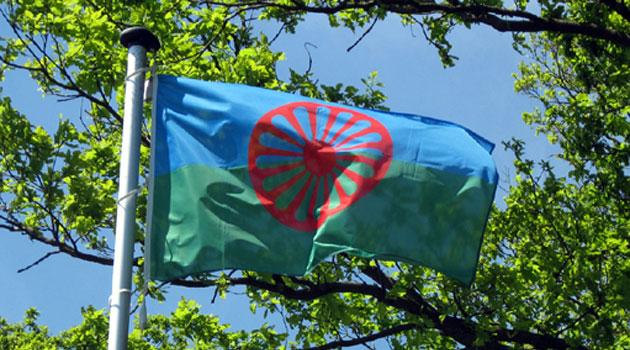Michal Mižigár: What myths exist about World Roma Day and what is the reality?

8 April marks an historic milestone in the global history of the Roma. It is celebrated more and more around the world every year.
Let’s look back at what this holiday, which is already relatively familiar in the Czech Republic, is commemorating. What do we know – and not know – about this holiday, and what myths are circulating about it?
On this day we remember the World Roma Congress of delegates from various European countries in Orpington near London, England, which took place on 7-12 April 1971. On 8 April 1971, the important meeting that we commemorate every year took place.
An international Romani music festival was held near Hampstead as part of this congress. According to a report published in the Romano Ľil newspaper at that time, Romani delegates from Czechoslovakia actively participated in the events.
The Czechoslovak Romani delegates’ languages of communication with their fellow delegates were different dialects of Romanes and Russian. Already at the first World Roma Congress, various working groups were set up: One on social services, one on the schools, and a socio-legal group to secure compensation for the Romani victims of Nazism during World War II.
We should remember that this first Congress took place in 1971, when the Holocaust of the Roma had yet to be recognized by any countries. In addition, Roma in their various countries were facing assimilation, their children did not have access to education, and they were more socially disadvantaged than the majority societies in the countries where they lived.
It was exactly this first congress of Roma from different countries that wanted to respond to these problems. In addition to the above-mentioned working groups, the following three outcomes were also approved at the first Congress: the Roma anthem, the Roma flag, and the use of the word “Roma” to refer to Romani people.
Designation of the word Roma
The name “Roma”, which is indigenous to the Roma and comes from the Indian word “Dom” (with a rolled D sound), later became pronounced as “Lom” by means of a natural linguistic transformation (a group called the Lom now live mainly in Armenia) and then later, when the Roma were in the Byzantine Empire on European soil, this “L” was first transformed into “Rrom” (which the Kalderash Roma still use) and then into today’s most widely-used version as the Roma. The very designation of the word “Roma” is still controversial for various ethnic groups belonging to the Romani community, because there are such groups in Europe who do not call themselves Roma, but “Romanichal” (in Great Britain), or “Sinti” (especially in German-speaking countries) or “Manouche” (in France).
There are also other Romani groups in Europe who do not speak the Romanes language and who insist on their own self-designations, such as the “Bayash” and the “Rudari” in Southeastern Europe. These groups distinguish themselves from other Romani ethnic groups according to their traditional crafts.
The 1971 congress delegates from different countries wanted to stop the use of labels that are offensive when referring to Romani people, such as “Cikán” (in Czech), “Cigán” (in other Slavic languages), “Gypsy” (in English), “Gitano” (in Spanish) or “Zigeuner” (in German). The concepts associated with these terms date back to the Byzantine Empire in the 8th – 10th centuries, when a hated group of people called the “Athinganoi” was considered a religious sect.
Those whom we now call the Roma reminded the Byzantines of the Athinganoi because they were similarly marginalized and engaged in worldly things such as divination, which was forbidden in Christian society at the time because it was perceived as a sin. Another word that became the basis for the terms “Gypsy” and “Gitano” comes from the designation “Egyptoi” (Egyptian) to indicate that these people were from the area of “Little Egypt” (today’s Greece), which is often misinterpreted to mean the country called Egypt today.
Today we can see that neither the designation of “Athinganoi” or of “Egyptoi” was ever accurately applied to the Roma at all. Because the Roma were marginalized, however, they were never in a position to decide on their own self-determination.
Another reason to use the word “Roma” in 1971 was as part of the effort to achieve recognition of the Roma as a national minority in those countries where the Roma lived, and not just so that they could promote their culture, history and language, but also to assert their basic human rights – for example, to be awarded citizenship, which in some countries remains an unresolved issue to this day. In the Czech Republic, the Roma became recognized as a national minority after the transition to democracy, but in Spain, for example, the Constitution does not recognize any national minorities.
The Roma flag
The organizers and participants of the 1971 World Roma Congress first used the original Roma flag that had been approved by the national Roma Congress held in Bucharest, Kingdom of Romania, in 1933, and that originally consisted of just an upper blue stripe and a lower green stripe. The blue represented the sky and the green, the earth.
The red wheel in the middle, the so-called Ashoka Chakra, was added by the congress participants in 1971 as a reference to the homeland the Roma left when they migrated into Europe. The addition of this chakra was motivated by the positive relations that existed between diplomats from India and Romani people in Great Britain at the time.
The Roma flag is flown on the occasion of World Roma Day or on the Memorial Day of the Holocaust and its Roma Victims (August 2), or at various Romani festivals. Although the Roma flag has been recognized by international institutions, it is not automatically available as an emoji through social networking sites such as Facebook yet.
The anthem “Gelem, gelem“
“Gelem, gelem” is the name of the Roma anthem adopted at the 1971 congress, the melody of which is based on folk songs of the Romanian Roma and the lyrics for which were compiled by a Romani musician from the former Yugoslavia, Žarko Jovanović. In Czechoslovakia, it took a few decades from the first World Roma Congress for this anthem to become known to the general public.
At first, most Czechoslovak Roma did not welcome “Gelem, gelem“, first because in the former Czechoslovak area, another song composed by Czechoslovak Romani concentration camp prisoners was perceived to be the Roma anthem, and secondly because, after the state abolished the Union of Gypsies-Roma in the early 1970s, all Romani emancipation efforts were suppressed by the former regime, which aimed to assimilate the Roma into the Czechoslovak population. As a result, over time, “Gelem, gelem” fell out of the repertoire until after the 1989 transition to democracy.
Finally, I would like to mention the two most common myths in circulation about 8 April: First, the International Romani Union (IRU) was not established in 1971, but was established just before the Second World Roma Congress in Geneva, Switzerland, in 1978. Second, the idea to annually commemorate the First World Roma Congress on on 8 April was presented for the first time at the Second World Roma Congress and later approved at the Fourth World Roma Congress in 1990 in Warsaw, Poland.
Originally published in Romano Hangos
